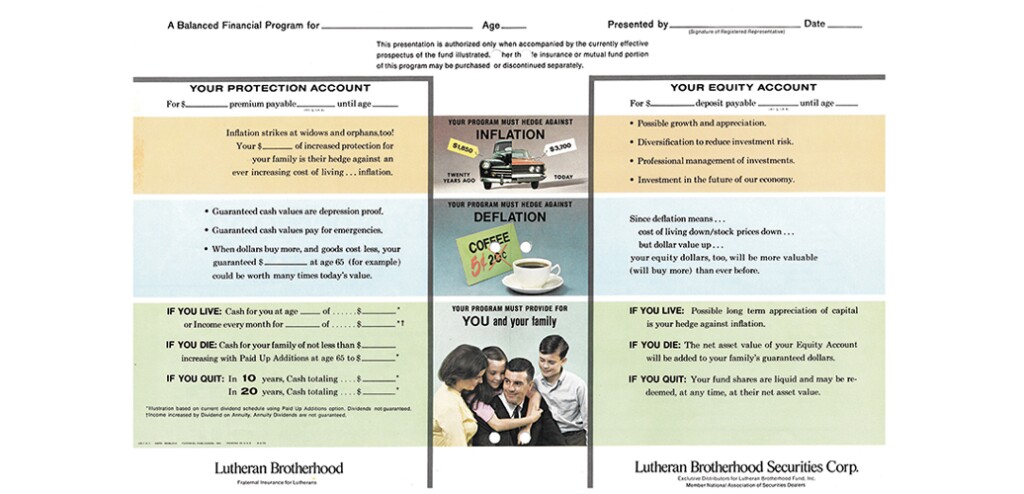Whether you're planning for retirement, building wealth or securing an education fund, it's crucial to have an investment strategy to achieve your financial goals. Part of that strategy is having a diversified portfolio, which often includes mutual funds. These types of investments give you access to professionally managed portfolios of stocks, bonds and other assets.
Explore the diverse landscape of mutual fund types and their underlying principles. Understanding these fundamentals will empower you to make informed investment decisions aligned with your financial goals and risk tolerance.
What is a mutual fund?
A
Mutual funds are typically classified based on their investment objectives and asset allocations. Some focus on capital appreciation while others prioritize income generation or risk mitigation.
The
7 types of mutual funds
Different types of mutual funds are available, each geared to different investment strategies and investors' risk tolerances. The main types of assets are stocks, bonds, cash and commodities, each with several subclassifications:
1. Equity funds
- Large-cap, mid-cap, small-cap and international funds, which are based on the market capitalization of the companies they invest in
- Growth funds, which focus on companies expected to grow faster than the market average
- Value funds, which target undervalued stocks of companies with strong fundamentals or a history of paying dividends
2. Fixed income funds
- Government bond funds, which are invested in Treasury securities for stability
- Corporate bond funds, which are invested in corporate debt and may include high-yield bond funds as they generally come with more
credit risk than Treasuries - Municipal bond funds, which provide tax-free income at the federal level and sometimes at the state level
3. Money market funds
- Government money market funds, which are invested primarily in U.S. Treasury securities and offer a high level of safety
- Prime money market funds, which are invested in a mix of corporate debt, government securities and bank obligations like CDs and generally offer higher yields than government and municipal money market funds
- Municipal (tax-exempt) money market funds, which are invested in short-term municipal bonds and other tax-exempt securities, and interest earned is often exempt from federal (and sometimes state) income tax.
4. Index funds
- Broad market index funds, which track major indices like the S&P 500, Dow Jones Industrial Average or Russell 3000 and are suitable for long-term, passive investors seeking diversified growth
- Total market index funds, which invest in all publicly traded companies or bonds within a country or globally and are ideal for investors who want broad diversification with exposure to a range of market capitalizations or bond types
- Sector index funds, which track specific industries such as technology, health care, energy or financials. and allow for targeted investment in high-growth or specialized sectors
5. Allocation funds
An
- Conservative allocation funds, which favor bonds over stocks for lower risk
- Moderate allocation funds, which maintain a balanced mix of equities and fixed income
- Aggressive allocation funds, which are heavily weighted in equities for higher growth potential
- Target date funds, also called life cycle funds, which are invested in a diverse mix of stocks and bonds and have asset allocations that adjust automatically over time to shift from higher-risk investments to more conservative ones as the investor's
target retirement or goal date approaches
6. Commodity funds
- Broad commodity index funds, which track a diversified basket of commodities such as energy, metals and agriculture
- Precious metals funds, which invest in
precious metals like gold, silver and platinum, or in mining companies - Energy funds, which focus on oil, natural gas and renewable energy sectors
7. ESG funds
Environmental, social and governance (ESG) funds represent a growing segment of the investment landscape. They invest in businesses committed to responsible environmental practices, social impact and good corporate governance. ESG funds have gained popularity among investors who want their portfolios to reflect their values while still aiming for solid returns. Options for these include:
- Broad ESG funds, which invest across industries, selecting companies with strong ESG metrics
- Environmental (green) funds, which focus on companies addressing climate change, renewable energy and sustainable practices
- Socially responsible investing funds, which avoid companies involved in controversial industries like tobacco, firearms or gambling.
- Governance-focused funds, which prioritize companies with strong corporate governance, transparency and ethical leadership
- Impact investing funds, which invest in companies or projects that generate measurable social or environmental benefits.


Active vs. passive mutual fund management
Choosing the right mutual fund for you
Choosing the right mutual fund depends heavily on aligning your investment with your personal circumstances, including your
Financial goals
- Long-term growth. If your goals include retirement savings, college savings or a large down payment, you're looking for long-term growth. You may want to consider growth-oriented mutual funds like stock funds but perhaps with a slightly lower
risk profile than your retirement portfolio. - Short-term income. Here, your primary objectives are to prioritize current income, capital preservation and liquidity. Appropriate fund types may include low-risk options like bond funds and money market funds or stable stock funds that pay dividends.
Risk tolerance
- High risk tolerance. If you're comfortable with market fluctuations and understand that your investments might decrease in value in the short term, you can consider a higher allocation to stock funds. These funds offer the greatest potential for long-term growth.
- Moderate risk tolerance. A balanced approach, typically involving a mix of stock and bond funds, is suitable for moderate risk tolerance. This offers a balance between growth potential and stability.
- Low risk tolerance. If you're concerned about losing money and prefer stable returns, focus on bond funds or conservative allocation funds. While returns might be lower, your principal is better protected.
Time horizon
- Long term. A longer time horizon of 10 or more years allows you to ride out market volatility. You can afford to invest in higher-risk, higher-return investments like stock funds.
- Intermediate term. A medium term of five to 10 years requires a more balanced approach. A mix of stock and bond funds is usually appropriate.
- Short term. When your time horizon is less than five years, you should prioritize preserving capital. Stick to low-risk options like money market funds or short-term bond funds.








